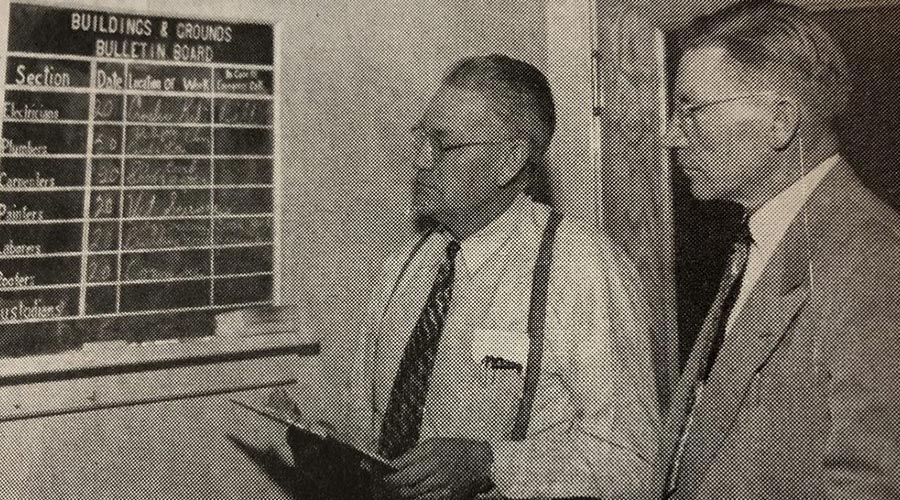 Photo by Jim Prisching
Photo by Jim PrischingCombining Efficiencies in Cost, Space, and Inclusivity
The Common Space program at Northwestern University allows different departments to work together for a more aesthetically pleasing and sustainable campus.
Cost-efficiency, space-efficiency, and inclusivity of space are also the goals for a university plan known as Common Space. D’Angelo explains that about 1.8 million square feet across campus had been “orphaned.” These are spaces, such as lobbies, restrooms, stairs, and corridors that everyone at the university uses, but that were essentially abandoned because the deans of the schools, who were in charge of requesting and delegating funds for their upkeep or renewal, poured funds into classrooms or lab space instead. The Common Space program creates a pool of money that allows spaces to be refreshed across campus, and branded similarly.
The idea is that renovating these spaces on a continuous basis benefits not only the particular schools where the spaces reside, but also the university as a whole — “it takes competing needs and combines them together,” says D’Angelo.
Common Space means that solutions are more cost-effective and better tied to the university as a whole than could be done if each department or school were looking at their space individually. And looking at the spaces systematically is much more inclusive because space can be repurposed for gender-neutral restrooms or lactation rooms, as well.
Stakeholders have input in the standards and prioritization, so the program solves those issues in a controlled and repeatable manner, says D’Angelo. “Instead of competing for resources, it’s the stakeholders who are collaborating to use resources best,” he says. “I’m not the one who has to scream for money.”
D’Angelo has set a goal of capitalizing at least 55,000 square feet of space per year through 2023, tracked in his KPI deck. It’s a goal the team achieved in 2017, refreshing 56,800 square feet.
Finally, in re-doing these spaces, it’s possible to work on one of D’Angelo’s main goals as well: sustainability. Common Space provides the chance for much-needed lighting upgrades in lobby space, for instance. As well, insulation can be added behind walls to lower heating and cooling costs.
Sustainability is one area that hits several “ands” at once, says D’Angelo. “Without sustainability being part of the conversation, our solutions wouldn’t be as elegant.” It’s no accident that the university’s Office of Sustainability is housed within facilities management. “Sustainability has to be universal,” says D’Angelo. “It has to touch faculty, students, researchers, and staff, and also go beyond the boundaries of campus to the community at large. Facilities is one of those organizations that does cross all boundaries.”
Sustainability is one of the key facets of the KPI deck. There are the standard metrics of energy use intensity and waste diversion, but also non-standard ones like “engagement: sustainability outreach,” which measures newsletter subscription and open rates. “We don’t want to be that organization that declares victory but never shows the data for how we got there,” says D’Angelo.
Northwestern recently published its first five-year sustainability plan, which includes goals in five areas on everything from developing a LEED Operations and Maintenance training plan (the university’s standard for new construction is LEED Silver, and recently certified its first building at the Platinum level) to developing an electric vehicle charging policy. The university’s ultimate goal is to be net-zero emissions by 2050, a major undertaking, says D’Angelo. That’s because the university, with its focus on research and surfeit of lab space, is more like a hospital than a traditional college campus, energy-intensity-wise.
But with the culture of collaboration and cross-departmental goals well-established at Northwestern, D’Angelo sees net-zero emissions as an eminently accomplishable goal.
“One of the things that makes my job so much fun is watching these different departments and seeing collaboration and solutions, and how much more elegant they are because they’re tied to all the goals,” he says.
Email comments and questions to greg.zimmerman@tradepress.com.
Related Topics:
















